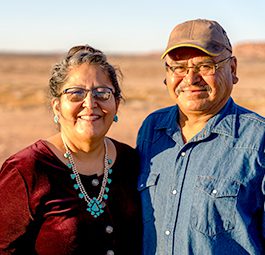Asthma
Nasal Polyps
Nasal polyps are small growths on the lining inside the nose or sinus cavities. They are not cancer. They are shaped like hanging grapes or teardrops. Nasal polyps are usually soft and painless. They can be in both sides of the nasal cavity. Also, they can usually be identified as different from normal nasal tissue.
You may develop nasal polyps from chronic (long-term) inflammation and swelling in your sinuses. People with respiratory diseases, such as asthma, chronic rhinosinusitis, or aspirin-exacerbated respiratory disease (AERD), have a greater chance of having nasal polyps. This is called chronic rhinosinusitis with nasal polyps (CRSwNP).
If you do not get treatment for nasal polyps, they can cause long-term problems in your nose and sinuses. This can have a major impact on your quality of life and mental health.
What Are the Symptoms of Nasal Polyps?
Symptoms may be different for each person and may vary depending on your age. Common symptoms of nasal polyps may include:
- Runny nose
- Stuffy nose (congestion), fullness, blockage within the nose (most common symptom)
- Trouble breathing through the nose
- Postnasal drip (sometimes causing cough and throat irritation)
- Loss of or decreased sense of smell and taste
- Headaches
- Pressure or pain on your face or in your sinuses
- Pain in your upper teeth
- Snoring, trouble sleeping, and breathing through your mouth at night
Who Is at Risk of Getting Nasal Polyps?
As many 4% of people in the United States have nasal polyps. They mainly affect adults over 20 years old and are uncommon in children under 10 years old.1 Nasal polyps are 2 times more common in males, but females who develop nasal polyps usually have more severe cases.2
Experts don’t fully understand what causes nasal polyps. But they have found that certain conditions may play a part in developing nasal polyps. They include:
- An increase in a type of immune cell called an eosinophil [EE-oh-sin-oh-FILL]
- Certain types of infections, especially a type of staph bacterial infection
- Damaged nasal and sinus thin tissue – this may increase your exposure to airborne viruses, allergens, and particles in the environment and can lead to long-term inflammation (swelling)
You may be at a higher risk of getting nasal polyps if you have:
- History of allergies
- Recurring sinus infections
- Nasal trauma (nose injuries)
- Past nasal surgery
- Long-term exposure to poor air quality or allergens such as pets
- Family history of nasal polyps
How Do Doctors Diagnose Nasal Polyps?
Your doctor can make a diagnosis by asking questions about your medical and family history, your specific symptoms and doing a physical exam. This may include an exam of your nose with the help of a lighted instrument. Your doctor may also run other tests, such as:
- Nasal endoscopy (a scope or narrow tube with tiny camera up your nose)
- Imaging scans of the sinuses (a sinus CT scan is ideal, if possible – X-rays of the sinuses are not generally recommended)
- Allergy tests to rule out specific allergies
- Blood tests to rule out specific allergies and immune problems
- Rarely, a look at airflow and biopsies of the sinuses
If you have nasal polyps, you may see a team of doctors. They can include:
- Primary care physician (PCP)
- Ear, nose, and throat (ENT) specialist
- Allergist/immunologist
- Sinus surgeon (ENT or neurosurgeon)
What Treatments Are Available for Nasal Polyps?
There are several treatments to help you manage nasal polyps. Talk with your doctor to decide which treatments are best for you.
Nasal corticosteroids are often one of the first medicines used to treat nasal polyps. They reduce swelling and inflammation to shrink the polyps. But they may not reach deep enough into the nasal cavity to be as effective as they need to be. Common nasal corticosteroid sprays include:
- Fluticasone (brand example: FLONASE)
- Budesonide (brand example: RHINOCORT®)
- Mometasone (brand example: Nasonex™)
- Triamcinolone (brand example: Nasacort®)
- Beclomethasone (brand example: BECONASE AQ®)
- Ciclesonide (brand example: OMNARIS®)
If a nasal corticosteroid doesn’t work, your doctor may suggest a short-term oral corticosteroid, such as prednisone. They may prescribe it alone or in combination with a nasal spray. If your nasal polyps are severe, they may recommend an injectable corticosteroid.
Be aware that using oral or systemic (treats your entire body) corticosteroids often or for a long time can cause major side effects. Talk with your doctor about the benefits and risks.
Use a saline (saltwater) nose rinse to remove irritants and allergens from your nose. This is a safe and inexpensive option that can improve nasal congestion. The water should be high volume but low pressure. Doing a nasal rinse before using a topical medicine nasal spray can help the medicine reach the tissue in your nose.
Biologics are treatments that target a certain cell or protein to prevent swelling and inflammation inside the airways. They are not steroids. They are given by injection or infusion. Your doctor may prescribe a biologic if other medicines aren’t working.
As of July 2024, there are 3 biologics (approved by the FDA) to treat chronic sinusitis with nasal polyps:
- Dupilumab (DUPIXENT®)
- Mepolizumab (Nucala)
- Omalizumab (XOLAIR®)
People with asthma are more likely to have chronic rhinosinusitis and nasal polyps.
For more severe cases, surgery may be the best choice. This may happen when polyps do not respond to medical treatments. Surgery can be done by an ENT specialist to remove nasal polyps. This is most often done on an outpatient surgical center. This means you don’t have to stay in the hospital to recover.
During the surgery, the surgeon inserts a small tube with a lighted magnifying lens (called a tiny camera endoscope) into your sinuses. The surgeon then removes the polyps with small instruments. The surgeon may also make the openings from your nasal cavities to your sinuses larger.
How Can I Manage Nasal Polyps and Stop Them from Coming Back?
If you have surgery to remove nasal polyps, take proper care of your sinuses to stop them from coming back. Take these steps to prevent nasal polyps from returning:
- Use a saline nasal spray or rinse to keep your nasal passages moist and prevent swelling. If you have nasal allergies, it can also flush allergens, such as pollen, from your nose.
- Use a nasal corticosteroid spray to reduce swelling.
- Keep your asthma and allergies well-controlled. People with asthma and allergies have a higher chance of developing nasal polyps.
- Reduce your exposure to irritants (such as air pollutants, smoke, dust, chemicals) and your allergy triggers (such as pollen, animal dander, mold, dust mites) as much as possible. Use Certified Asthma & Allergy Friendly® products to help you have a healthier home.
- If the air in your home is dry, use a humidifier. Dry air can dry out your nose. Moist air can help improve the flow of mucus and prevent swelling. Try to keep your home between 30 and 50%, if possible. Dust mites and molds (both common allergens and irritants) thrive in humidity over 50%.
- Wash your hands often with warm water for at least 20 seconds. This can reduce your chance of getting an infection from bacteria or a virus that could cause swelling in your nose and sinuses.
Medical Review: July 2024 by John James, MD
Closed
References
- Newton JR, Ah-See KW. A review of nasal polyposis. Ther Clin Risk Manag. 2008 Apr;4(2):507-12. doi: 10.2147/tcrm.s2379. PMID: 18728843; PMCID: PMC2504067
- Stevens, W. W., Schleimer, R. P., & Kern, R. C. (2016). Chronic Rhinosinusitis with Nasal Polyps. The Journal of Allergy and Clinical Immunology. In Practice, 4(4), 565–572. https://doi.org/10.1016/j.jaip.2016.04.012











